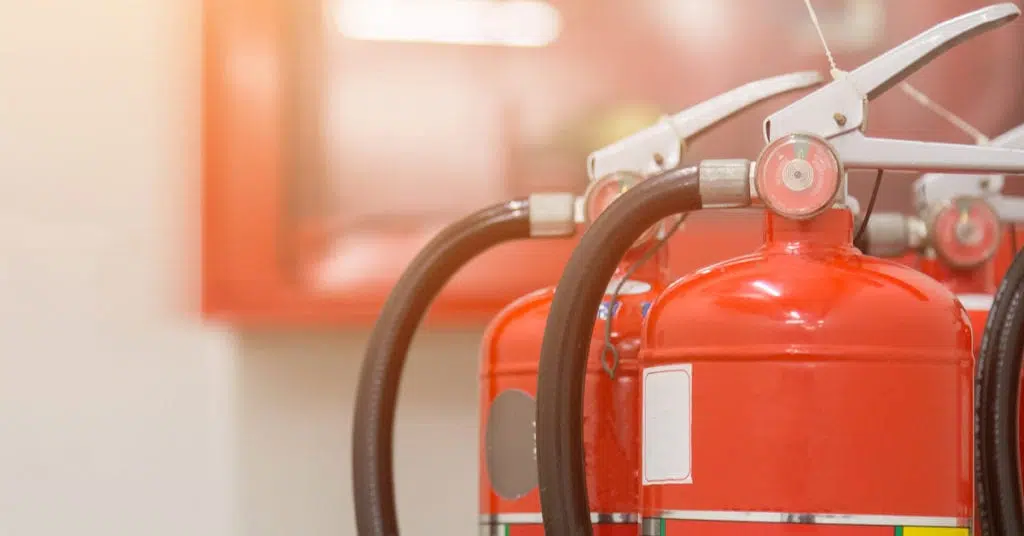
Due to high temperatures during March, most areas in the Philippines are more susceptible to fire incidents. Because of this, it was declared as Fire Prevention Month under Presidential Proclamation No. 115-A. Regardless if you are running a household or managing a commercial building, the goal of Fire Prevention Month is to raise fire safety awareness to everyone – including but not limited to learning the classes of fire, the different types of fire extinguishers, as well as their functions.
I. Classes of Fire
Fire extinguishers are classified according to the type of fires they extinguish. Using the wrong substance on a particular class of fire is futile and may further worsen the blaze. Hence, it is crucial to know the source of fuel for a fire before fighting it.
· Class A – Fires that involve combustible, solid materials, such as wood, paper, or textiles.



· Class B – Fires that involve flammable liquids, such as paint, petrol, and gasoline.
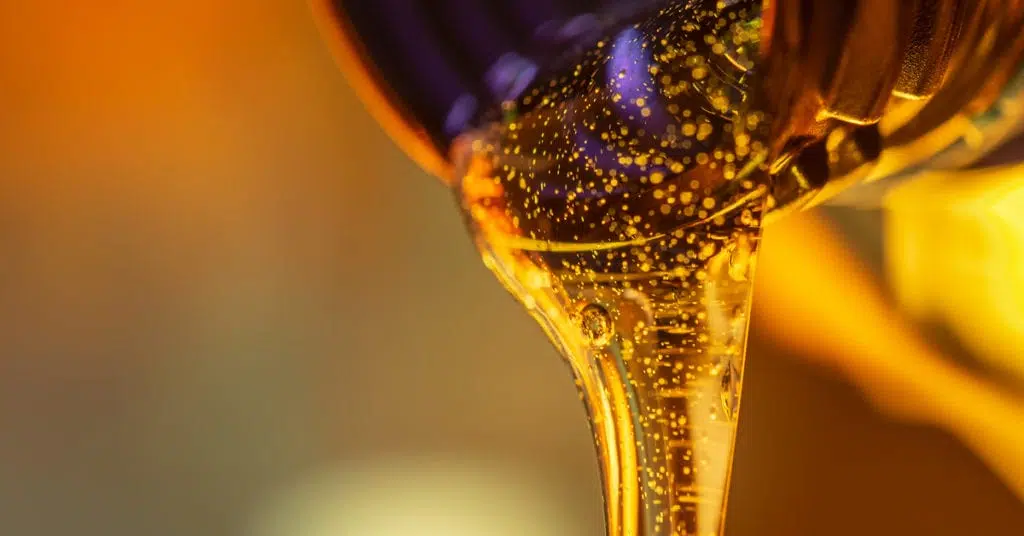

· Class C– Fires that involve flammable gases, such as methane, propane, and hydrogen.
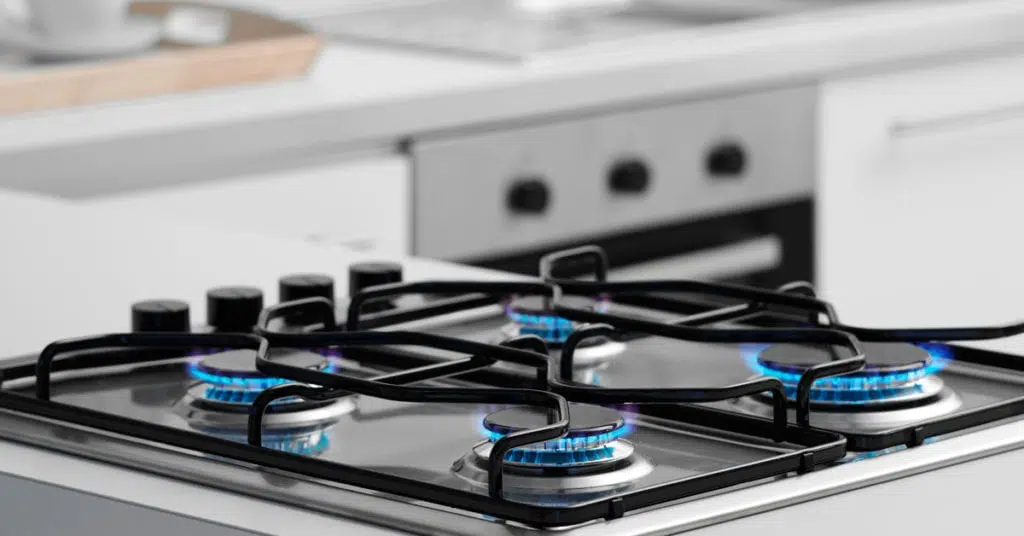
· Class D – Fires that involve combustible metals, such as aluminum, potassium, and magnesium.
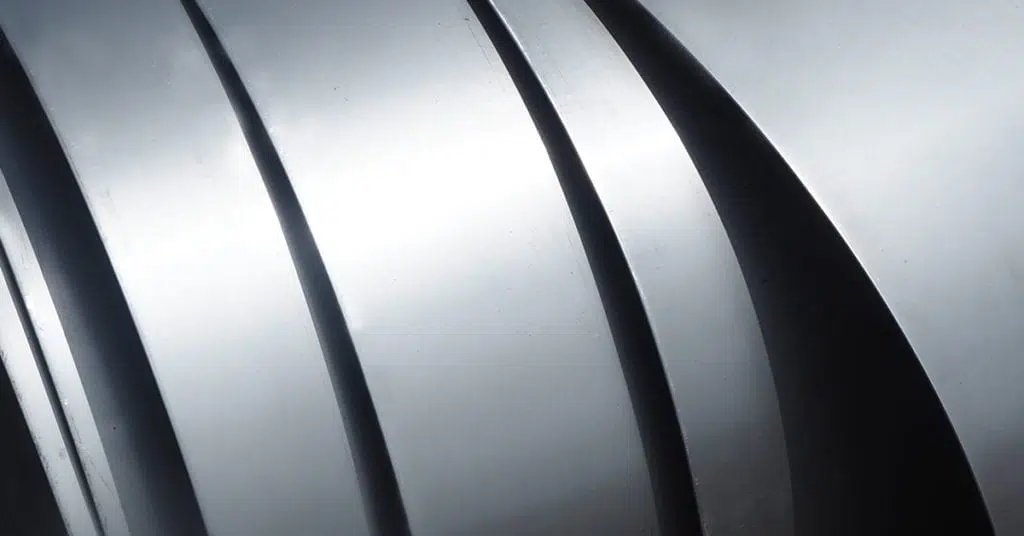
· Class F – Fires that involve cooking oils, such as vegetable oil, olive oil, and deep-fat fryers.
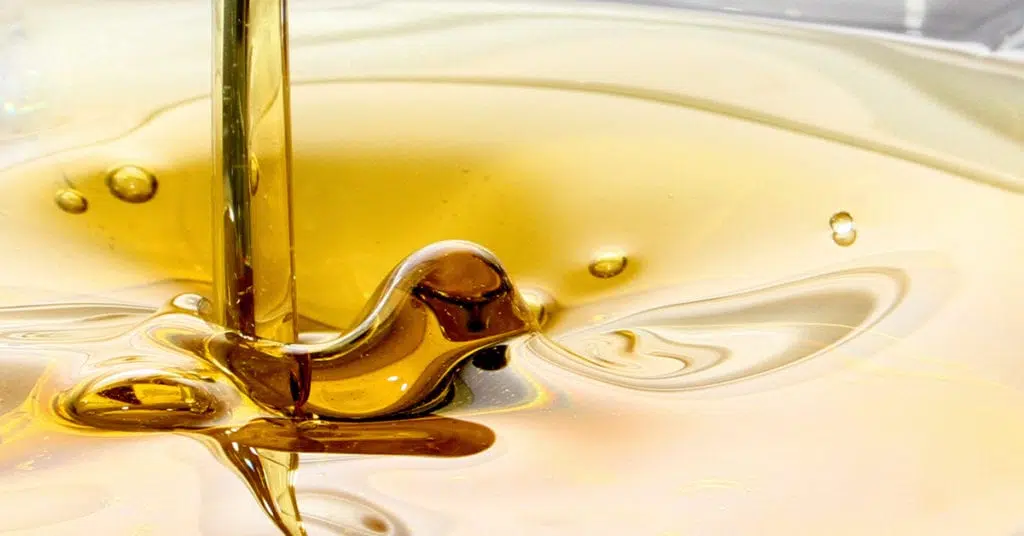
· Electrical – Fires that involve live electrical equipment, such as photocopiers and computers.

II. Types of Fire Extinguishers
Each type of fire extinguisher contains different materials that make them suitable for tackling certain types of fires. Many of them are identifiable by their names, colors, and hoses, indicating what Class they are proper to use for.
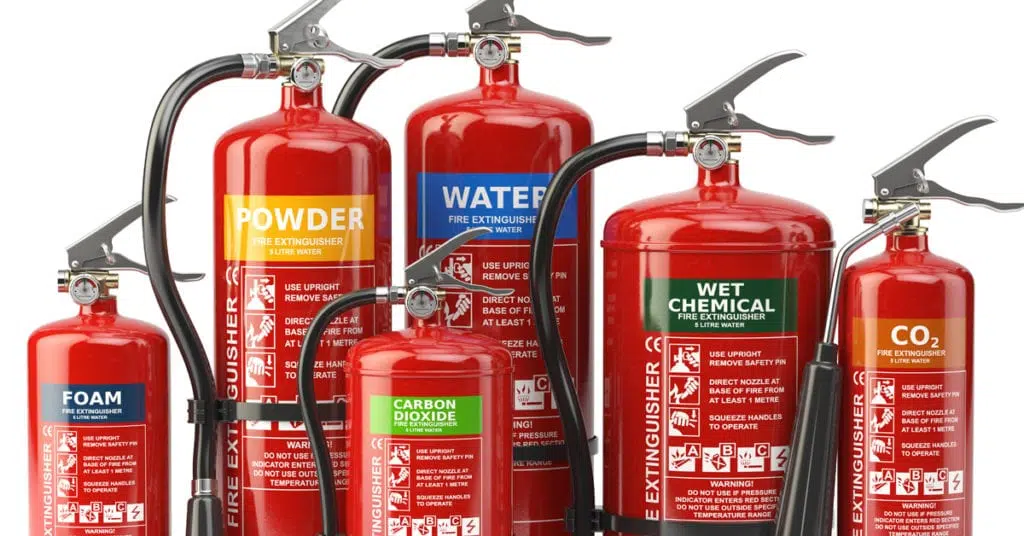
`1. Water
Standard Water Extinguishers contain water and compressed gas. The word ‘water’ or ‘aqua’ is printed across their body with a bright red label color. They can only be used on Class A fires, usually in a non-restrictive environment like schools, retail stores, and buildings.
Warning: Do not use water on fires caused by fat, oil, and electrical appliances.
`2. Foam
Foam Fire Extinguishers are red with a cream rectangle on their bodies. They are commonly used to fight Class B fires or flammable liquids. However, because they are a water-based foaming agent, they can also be utilized for Class A fires. They are also required for buildings where flammable liquids and organic material are found, like hospitals, apartments, schools, and office buildings.
Warning: Do not use foam on fires caused by flammable metals, electronic equipment, and in scenarios like kitchen fires.
3. Powder
Dry Powder Extinguishers, also known as ABC extinguishers, are effective at tackling Class A, B, and C fires caused by solids, liquids, and gases. They are also sometimes used for electrical-related fire incidents. You can identify Dry Powder Extinguishers through their blue label color. Because they cannot be used in enclosed spaces, they are generally suggested for businesses with large boiler rooms, LPG plants, welding services, and garage forecourts.
Warning: Although this kind of extinguishers can be used in electrical fires, it is essential to note that they should not be used on fires involving electrical equipment over 1000v. Do not also use dry powder on scenarios like kitchen fires and other fires in enclosed spaces.
4. Carbon Dioxide
Carbon Dioxide Extinguishers are used on putting out Class B and electrical fires. They can be identified through the white text ‘Carbon Dioxide’ or ‘CO2’ printed in a black rectangle. They are particularly useful for offices and workshops where electrical fires would most likely occur, such as server rooms and technology stores.
Warning: Do not use CO2 extinguishers on fires caused by flammable metals, paper, textiles, and in scenarios like kitchen fires.
5. Wet Chemical
Wet Chemical Fire Extinguishers are identifiable by the ‘wet chemical’ in the red text printed on a yellow label. This type of extinguisher is specifically designed to combat Class F fires, or also known as ‘cooking fires.’ They are most recommended for businesses involving cooking oils and burning fats, like commercial kitchens, canteens, and restaurants.
Warning: Do not use wet chemical extinguishers on class B and C fires, as well as on electrical fires.


As much as you don’t like it, fires could happen at any given time. You must know how to take care of yourself, your household, and your business before, during, and after it strikes. Your home and your business are one of the most important, and sometimes, the most costly investments you’ll make in your lifetime. Hence, it only makes practical sense to purchase fire and property insurance that protects you against financial liability and property damage.
Get MICI’s fire and property insurance today and email [email protected] to find out how it can further protect you from life’s uncertainties.




